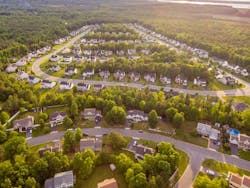How Is the Coronavirus Affecting the Latest Home Prices?
Though home prices have not taken a nosedive yet, growth has definitely slowed down amid the worsening economic conditions and shrinking homebuyer demand. Home prices hovered just 0.8 percent above the same time last year, a fraction of the growth seen in the beginning of the year. Despite lower prices, however, those still on the hunt for a home may not have much luck. In the week ending on April 11, the listings on Realtor.com fell 47 percent year-over-year as sellers pulled their properties with hopes of greener pastures later.
As the coronavirus crisis has evolved from solely a once-in-a-generation health crisis to a financial one as well, many folks have wondered what it will mean specifically for America's housing market.
In the past few weeks, the number of homes for sale on realtor.com® has plummeted by nearly half as sellers are pulling them off the market or holding off on listing their abodes. And as nonessential businesses remain shuttered and unemployment soars, reaching 22 million jobless claims in just four weeks, home price growth is also beginning to slow.
Home prices were up just 0.8% year over year in the week ending April 11. That was compared with a 1.6% annual rise in the week ending April 4, a 2.5% bump in the week ending March 28, and a 3.3% increase in the prior week.
